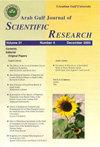Ethanol production from cassava peels using Saccharomyces cerevisiae via ethanologenic fermentation process
Q4 Business, Management and Accounting
引用次数: 0
Abstract
PurposeThis study aims to assess the effect of water variation on bioethanol production from cassava peels (CP) using Saccharomyces cerevisiae yeast as the ethanologenic agent.Design/methodology/approachThe milled CP was divided into three treatment groups in a small-scale flask experiment where each 20 g CP was subjected to two-stage hydrolysis. Different amount of water was added to the fermentation process of CP. The fermented samples were collected every 24 h for various analyses.FindingsThe results of the fermentation revealed that the highest ethanol productivity and fermentation efficiency was obtained at 17.38 ± 0.30% and 0.139 ± 0.003 gL−1 h−1. The study affirmed that ethanol production was increased for the addition of water up to 35% for the CP hydrolysate process.Practical implicationsThe finding of this study demonstrates that S. cerevisiae is the key player in industrial ethanol production among a variety of yeasts that produce ethanol through sugar fermentation. In order to design truly sustainable processes, it should be expanded to include a thorough analysis and the gradual scaling-up of this process to an industrial level.Originality/valueThis paper is an original research work dealing with bioethanol production from CP using S. cerevisiae microbe.HighlightsHydrolysis of cassava peels using 13.1 M H2SO4 at 100 oC for 110 min gave high Glucose productivityHighest ethanol production was obtained at 72 h of fermentation using Saccharomyces cerevisiaeOptimal bioethanol concentration and yield were obtained at a hydration level of 35% agitationHighest ethanol productivity and fermentation efficiency were 17.3%, 0.139 g.L−1.h−1利用酿酒酵母通过乙醇发酵工艺从木薯皮中生产乙醇
设计/方法/途径在小规模烧瓶实验中,将磨碎的木薯皮分为三个处理组,每 20 克木薯皮进行两阶段水解。在 CP 发酵过程中加入不同量的水。发酵结果表明,乙醇生产率和发酵效率最高,分别为 17.38 ± 0.30% 和 0.139 ± 0.003 gL-1 h-1。本研究结果表明,在通过糖发酵生产乙醇的各种酵母菌中,麦角菌是工业乙醇生产中的关键角色。为了设计出真正可持续的工艺,应该对这一工艺进行全面分析并逐步扩大到工业水平。原创性/价值本文是一项原创性研究工作,涉及利用 S. cerevisiae 微生物从木薯皮中生产生物乙醇。使用酿酒酵母发酵 72 h 时获得了最高的乙醇产量。
本文章由计算机程序翻译,如有差异,请以英文原文为准。
求助全文
约1分钟内获得全文
求助全文
来源期刊

Arab Gulf Journal of Scientific Research
综合性期刊-综合性期刊
CiteScore
1.00
自引率
0.00%
发文量
0
审稿时长
>12 weeks
期刊介绍:
Information not localized
 求助内容:
求助内容: 应助结果提醒方式:
应助结果提醒方式:


